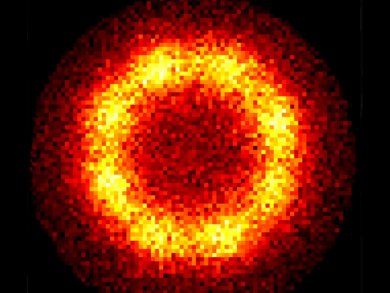At the Big Bang, matter and antimatter should have been produced in equal amounts, but the current lack of antimatter in the universe remains one of the biggest mysteries of science.
Antihydrogen atoms have been produced in a vacuum and trapped by using strong and complex magnetic fields to prevent them from coming into contact with matter. CERN’s ALPHA experiment has shown that it is possible to hold on to atoms of antihydrogen in this way for about a tenth of a second. Interactions of about 107 antiprotons and 7 × 108 positrons were observed by the ALPHA annihilation detector which recorded untrapped antihydrogen atoms annihilating on the inner surface of the ALPHA trap (see image). However, annihilation events consistent with the controlled release of trapped antihydrogen from the magnetic trap indicated that 38 antiatoms were trapped for long enough to study. This opens the door to future precision antihydrogen spectroscopy and anti-atomic tests of fundamental symmetries or gravitation.
Image: (c) CERN
- Trapped antihydrogen
G. B. Andresen, M. D. Ashkezari, M. Baquero-Ruiz, W. Bertsche, P. D. Bowe et al.,
Nature 2010, 468.
DOI: 10.1038/nature09610


